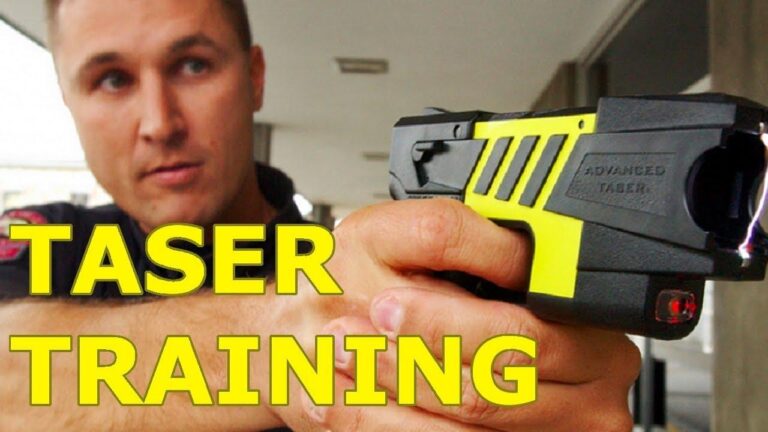Table of Contents
- Safe Preparations Before Testing Your Stun Gun
- Choosing the Right Environment for Risk-Free Testing
- Using Appropriate Equipment to Ensure Safety
- Step-by-Step Procedures to Minimize Accidental Harm
- To Conclude
Safe Preparations Before Testing Your Stun Gun
Before you proceed with testing your stun gun, ensuring your environment and personal readiness is crucial to prevent any unintended harm. Begin by selecting a clear, dry area free from flammable materials or liquids, as the electrical discharge could ignite these substances. Additionally, make sure to keep children, pets, and any bystanders at a safe distance-stun guns, even when used responsibly, pose serious risks if activated near unsuspecting individuals.
Don’t overlook your own protective measures either. It’s advisable to wear insulated gloves and stand on a non-conductive surface such as rubber or wood to minimize the risk of accidental shock to yourself. Before activation, double-check that the stun gun’s safety switch is engaged and familiarize yourself with the device’s operation manual. Taking these precautionary steps ensures that your testing process remains controlled, safe, and responsible.
Choosing the Right Environment for Risk-Free Testing
When preparing to test your stun gun, it’s essential to select a space that eliminates any potential safety hazards. Ideally, choose an open, well-ventilated area free from flammable materials and electronics that could be damaged by the electrical discharge. Outdoor settings, such as your backyard or a spacious garage with proper ventilation, are often the safest choices. Avoid enclosed spaces where sparks or accidental shocks could pose risks to you or others. Also, ensure pets and children are kept at a safe distance during testing to prevent accidental harm.
In addition to location, consider the surface on which you’ll conduct the test. Use a non-conductive, insulated platform, like a thick rubber mat or wooden table, to prevent unintended electrical pathways. Avoid metal surfaces or damp environments, as moisture can increase the risk of electric shock. Preparing your testing environment with these factors in mind drastically reduces the chance of injury or device malfunction, allowing you to verify your stun gun’s functionality confidently and safely.
- Choose open, ventilated spaces away from flammable objects and electronics.
- Keep pets and children distant to avoid accidental shocks.
- Use insulated testing platforms such as rubber mats or wooden tables.
- Avoid metal surfaces and damp environments to minimize conduction risks.
Using Appropriate Equipment to Ensure Safety
When testing your stun gun, choosing the right gear is crucial for preventing unintended injuries or device damage. Always utilize protective gloves made from insulated materials to shield your hands from electrical discharge. Safety glasses are equally important, guarding your eyes against any unexpected sparks or debris. Additionally, ensure you perform tests in a controlled environment where non-conductive surfaces like rubber mats are available to reduce the risk of electrical grounding through unintended paths.
Incorporate tools designed especially for electronic testing to further elevate your safety measures. A multimeter with high voltage capacity can help verify the stun gun’s current without physical contact, minimizing direct exposure. Consider using an insulated test block or a stun gun training cartridge that simulates discharge safely without launching a real spark. These items, often approved by manufacturers, provide an extra layer of security, making your testing sessions both effective and risk-free.
- Insulated protective gloves to avoid shock.
- Safety goggles to protect eyes from sparks.
- Non-conductive testing surfaces like rubber mats.
- Digital multimeter rated for high voltage measurements.
- Training cartridges or insulated test blocks for safe device simulation.
Step-by-Step Procedures to Minimize Accidental Harm
Before engaging in any tests, always disconnect the power source or battery when possible to reduce the risk of unexpected discharges. Use insulated gloves and take care to handle the stun gun by its grip to avoid contact with the electrodes. Make sure the testing environment is dry and free from flammable materials, and keep a safe distance from other people and pets. Preparing an area with a non-conductive surface, such as a rubber mat, further minimizes any chance of electric shock propagating beyond the intended test target.
When ready to test, employ a low-risk method such as using a multimeter or an authorized testing tool designed for stun guns instead of directly activating the device in the air. Alternatively, discharging into a proper test medium like a saline solution or rubber block can provide a safe simulation of the electric output without injury or damage. Never hold the electrodes against your skin or any part of your body, and always keep the stun gun pointed away from yourself and others. Following these careful steps ensures your stun gun is functional without compromising anyone’s safety.
To Conclude
Testing your stun gun safely is essential to ensure it functions properly without putting yourself or others at risk. By following the methods outlined above-such as using appropriate targets, maintaining proper distance, and adhering to safety guidelines-you can confidently verify your device’s performance while prioritizing safety. Remember, responsible handling and regular maintenance go hand in hand with effective self-defense tools. Stay safe, stay informed, and always practice caution when working with any electrical device.Check Our Other Blogs
- StunGun – Your Trusted Source for Stun Guns, Laws, and Self-Defense Tips
- PepperSprayLaws – Your Trusted Resource for Pepper Spray Information
- StunGunLaws – Your Trusted Guide to Stun Gun Legality and Safety





